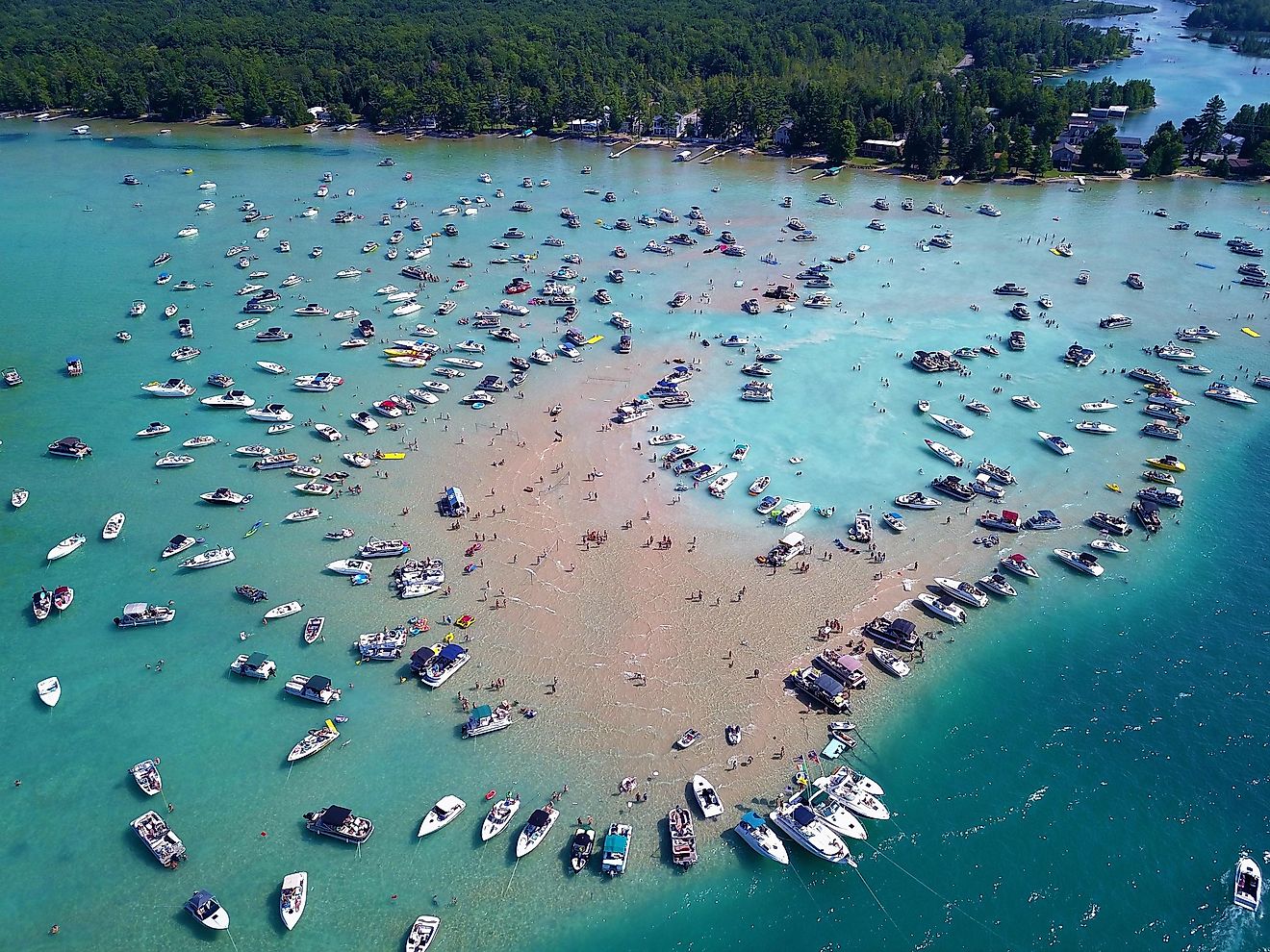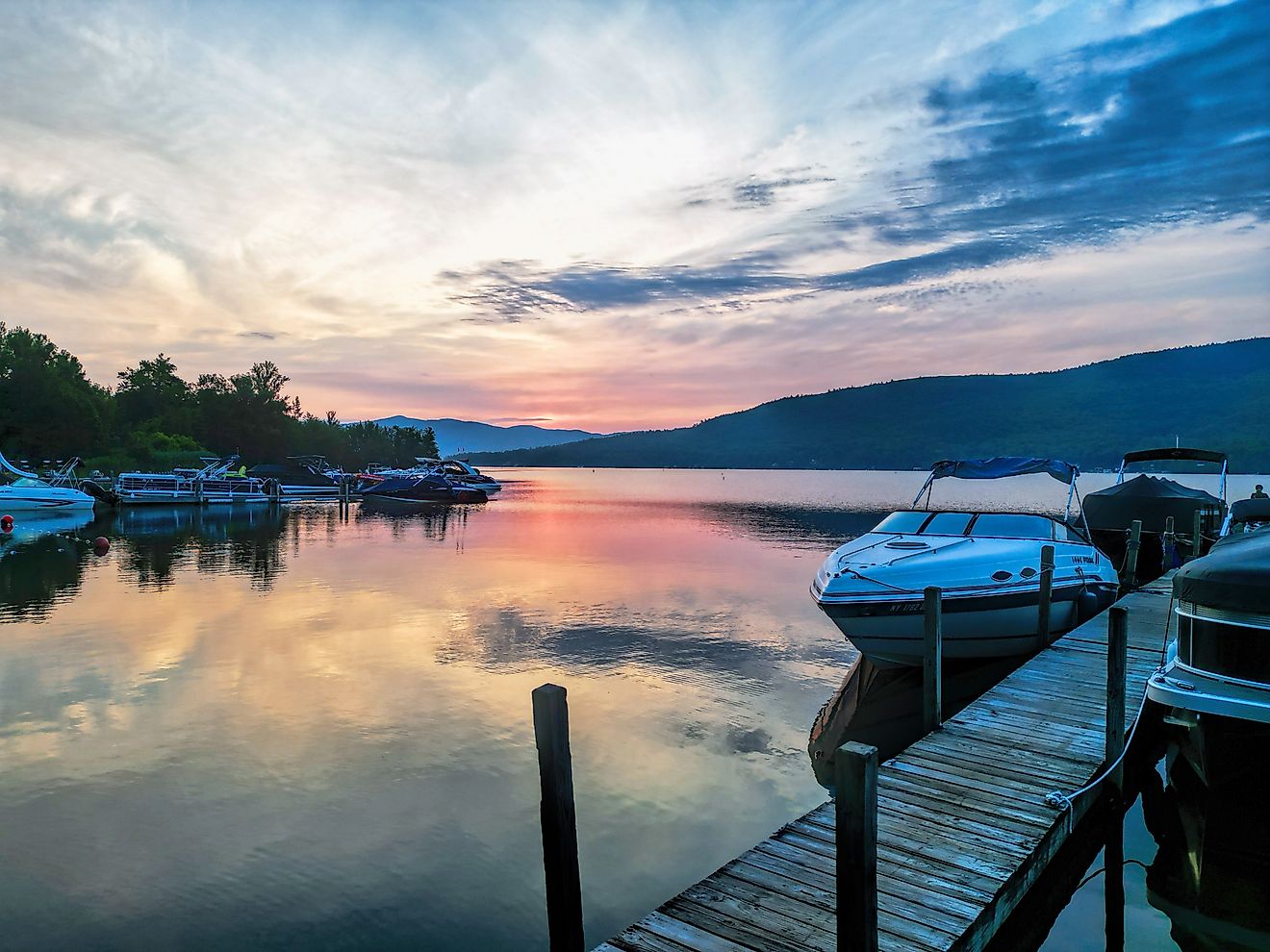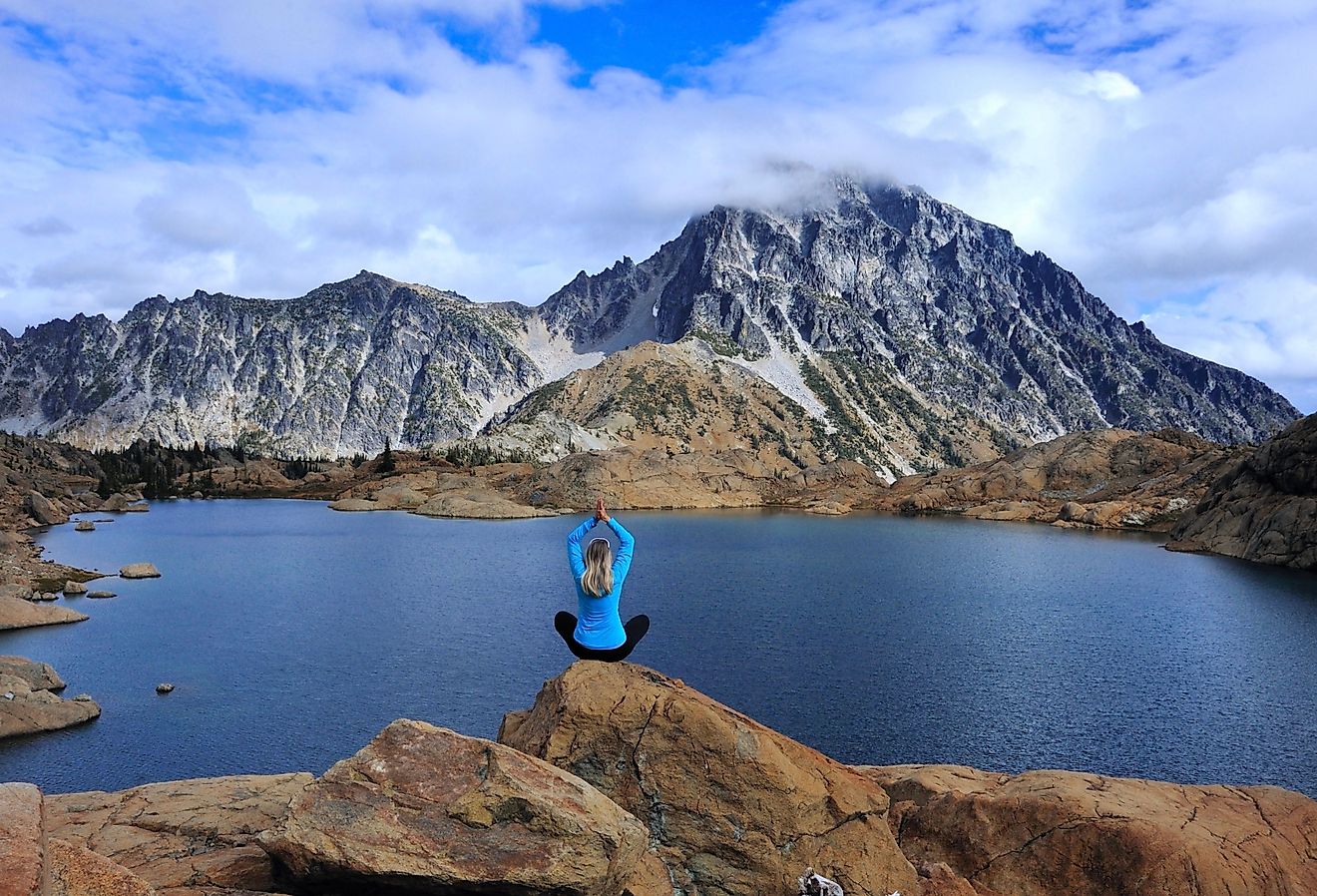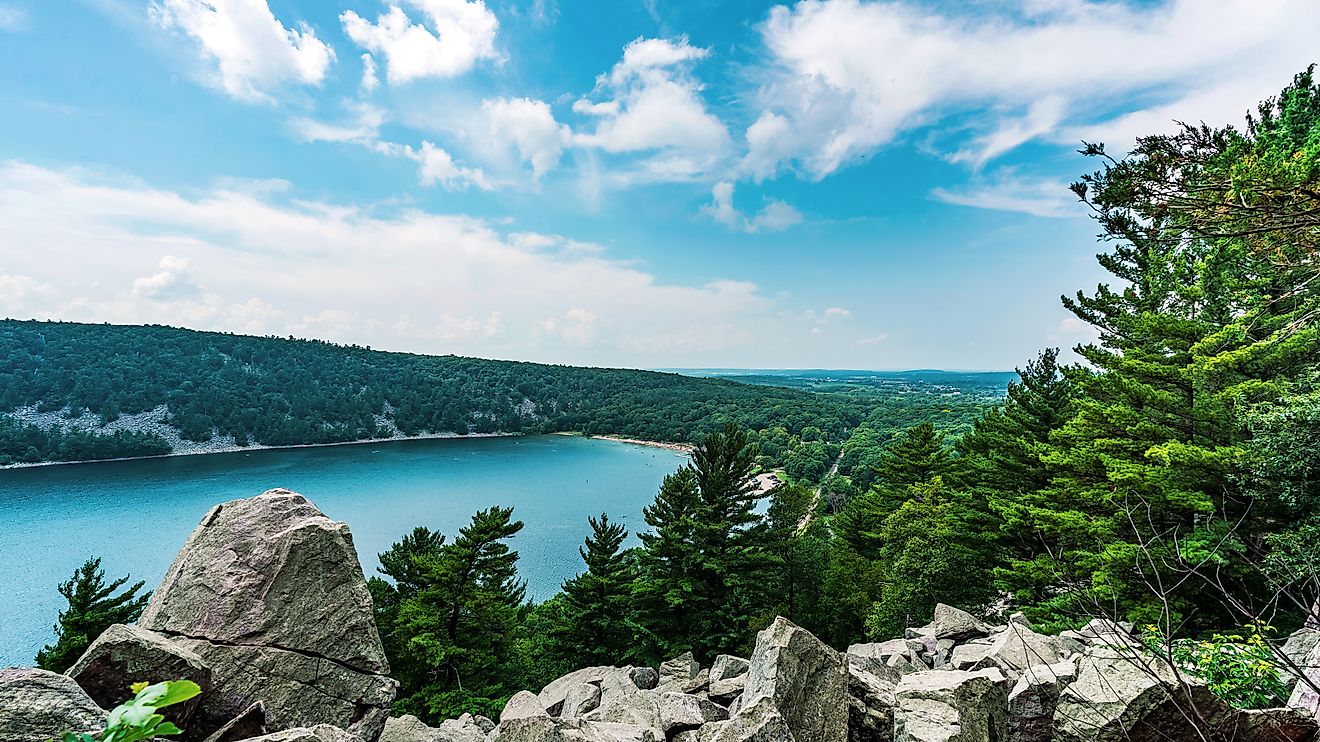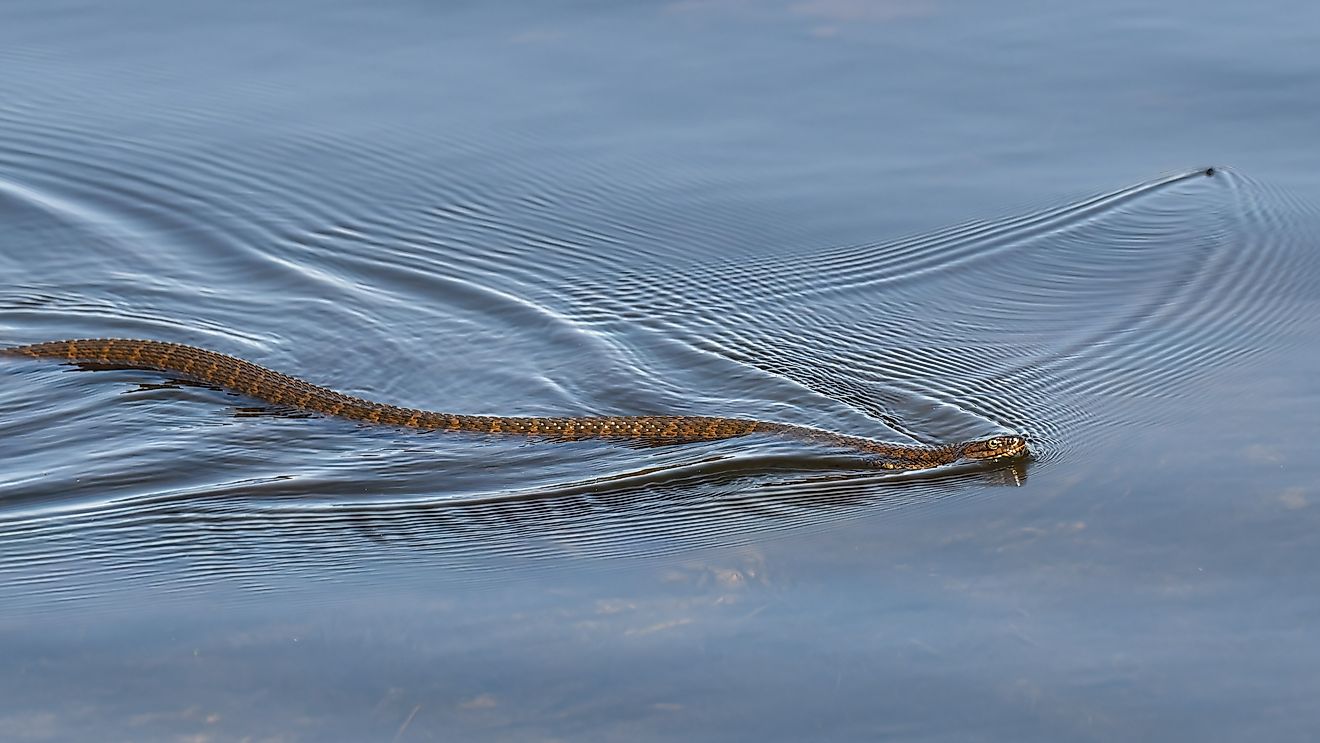
Tides
Tides are periodic variations in the sea level in response to the joint effects of the gravitational forces exerted by the Moon and the Sun on Earth. This natural phenomenon is mainly observed in large bodies of water where the gravitational pull causes a rise and fall of the water surface at regular intervals. When the water surface rises to its highest level, it is called high tide, whereas when the water surface falls to its lowest level, it is called low tide. Likewise, the flow of water from high to low tide is known as an ebb tide, and from low to high tide is known as flood tide. The difference in height between high and low tides is known as the tidal range, which changes in a regular pattern each month due to the Sun’s gravitational force on Earth.
For any given location, tide tables are used to get the predicted time and tidal range. However, these predictions depend on a number of factors, including wind direction and atmospheric pressure, which significantly affect the actual time of occurrence and height of the tide. In order to get accurate records, tide gauges have been placed at fixed locations for measuring the water level over a period. Moreover, tides play a critical role in various maritime-related activities and are also vital for the survival of different flora and fauna.
Causes Of Tides

Tidal constituents refer to the forces that impact tidal changes over a time period. The major tidal constituents include the combined effects of the gravitational forces exerted by the Moon and the Sun on the Earth, as well as the rotation of the Earth. With respect to the tidal forces on Earth, it is the distance between the two celestial objects which matters more than that of their masses. Based on its huge mass, the gravitational attraction of the Sun on the Earth is about 177 times greater than that of the Moon on the Earth. However, since the Sun is extremely far from the Earth in comparison to the Moon, the tide-generating force of the Sun is about half than that of the Moon. Therefore, it is the Moon that influences the tides on the Earth the most.
The Moon revolves around the Earth in a similar way as the Earth revolves around the Sun. Moreover, due to its comparatively large size, the Earth also exerts a strong gravitational pull on the moon. Although the moon has a small gravitational pull in comparison to the Earth, the moon’s gravitational pull on the Earth is strong enough to cause the water bodies to swell. As the Moon revolves around the Earth, the Earth also moves in a slight circle too, and this movement generates a centrifugal force on the oceans. The centrifugal force causes the water bodies to swell on the opposite side facing the moon.

It must be noted that since the gravitational field generated by the Moon weakens with the distance from the Moon, it exerts a much stronger-than-average force on the side of the Earth, which faces the Moon, and a much weaker force on the opposite side. As a result, the water bodies on the Earth swell twice: once on the Earth side closest to the Moon and once on the Earth side that is farthest from the Moon. It, therefore, seems that the moon’s gravitational pull tends to stretch the Earth slightly along a line that connects the two bodies. This distortion of the Earth’s shape is, however, not much pronounced on solid land, but since the water is fluid, the effect is far more pronounced in the water bodies. Due to the rotation of the Earth, the tidal force’s magnitude and direction at any particular point on the Earth’s surface change constantly. Thus, the water bodies never reach an equilibrium position, and the changing tidal force leads to rhythmic changes in the height of the sea level.
Frequency Of Tides

A majority of the coastal areas experience two high and two low tides every day. Unlike the 24-hour solar day, the lunar day is slightly longer, i.e., about 24 hours and 50 minutes, as the moon revolves around the Earth in the same direction as the Earth rotates on its axis. Therefore, the Earth rotates through two tidal bulges every lunar day; in other words, there are two high and two low tides every 24 hours and 50 minutes. High tides occur about 12 hours and 25 minutes apart, and it takes about 6 hours and 12.5 minutes for the waters at the shores to go from high to low and vice versa.
Moreover, the magnitude of tides differs in their heights in open areas compared to their heights in coastal areas. The enclosed Mediterranean and the Baltic Seas experience the lowest tides, which rise about 1 ft; in contrast, Canada’s Bay of Fundy has the largest tidal range, with the tides rising and falling about 56 ft.
Types Of Tides
Different types of tides occur due to the arrangement of landmasses on Earth, the shape of the seacoast, the water depth close to the coastline, and the shape of the ocean floor. Tides are further categorized based on the following two broad categories: Tides based on frequency and Tides based on the position of the Earth, Sun, and the Moon.
Tides Based On Frequency

Semi-diurnal tides
The term “Semi-diurnal” means ‘half of a day,’ so a semi-diurnal cycle refers to two complete cycles per day. Therefore, an area has a semi-diurnal tidal cycle if it experiences two high and two low tides having roughly equal sizes every lunar day. For example, many areas along the eastern coasts of North America and Australia, the western coast of Africa, and most of Europe experience semi-diurnal tidal cycles.
Diurnal Tides
The term “Diurnal” means ‘daily occurrence,’ so a diurnal tidal cycle refers to only one complete tidal cycle per day. Therefore, an area has a diurnal tidal cycle if it experiences one high and one low tide every lunar day. For example, many areas in the Gulf of Mexico, areas along Alaska’s west coast, and parts of Southeast Asia experience diurnal tidal cycles.
Mixed Semidiurnal Tides/Mixed Tides
An area has a mixed semidiurnal tidal cycle if it experiences two high and two low tides of different sizes every lunar day. For example, many areas along the Pacific coast of North America experience mixed semidiurnal tidal cycles.
Tides Based On The Position Of The Earth, Sun, And The Moon
Spring Tide
Sometimes referred to as syzygy tides, spring tides are the tides that occur close to the time of a new or full moon, approximately twice a month. The term ‘spring tide’ has been derived from the German term ‘springen,’ which means to ‘jump’ and thus has nothing to do with the spring season. During this time, the Sun, Moon, and Earth form a roughly straight-line configuration known as syzygy. One syzygy condition named ‘conjunction’ refers to the time during the new moon, when the Sun and Moon are on the Earth’s same side. Another syzygy condition named ‘opposition’ refers to the time during the full moon, when the Sun and Moon are on the Earth’s opposite sides. In either of these two conditions, the tide-generating forces of the Sun and the Moon reinforce each other, causing the tide’s range to be at its maximum. Thus, during spring tides, the high tides are higher than normal, while the low tides are lower than normal.
Neap Tide
Sometimes referred to as quadrature tides, neap tides or neaps are moderate tides that occur close to the time when the Moon is in the first quarter or third quarter. Geometrically, this condition is defined as the time during which the line from the Earth to the Moon is at 90° to the line from the Earth to the Sun. Thus, the Sun’s tidal force partially cancels the tidal force of the Moon, causing the tide’s range to be at its minimum. Neap tides occur about seven days after spring tides and generally result in much less extreme tidal conditions. Thus, during neap tides, the high tides are lower than normal, while the low tides are higher than normal.
History Of Tidal Theory
Due to its longevity and comparatively slow progress rate, the development of human knowledge about ocean tides occupies a special place in the history of earth sciences. It is believed that the indigenous Yolngu people, who lived in the historical Arnhem Land region of Australia’s Northern Territory, first identified a link between the Moon and the tides. However, the concept of tides received little attention from the ancient civilizations that took place around the Mediterranean Sea. This is attributed to the fact that tides are relatively smaller here, and the Mediterranean region experiences tides quite irregularly. The ancient Greek philosopher Plato hypothesized that the tides were caused by undersea caverns from which these currents came out and to which they returned. Although the exact date of discovery is unclear, the Greeks eventually found the link between the tides and the lunar and solar movements. Several other sources made references to the tidal phenomenon, like Pytheas of Massilia, Pliny the Elder, Seneca, Eratosthenes, Posidonius, Ptolemy, and Seleucus of Seleucia.
Nevertheless, the German astronomer Johannes Kepler in 1609 suggested that the gravitation of the Moon caused tides. The Italian astronomer Galileo Galilei in 1616 rejected this lunar theory of the tides and believed that the force of the Earth’s rotation and revolution led to the alternate acceleration and retardation of the oceans. However, in due course, Galileo’s theory proved to be erroneous. In 1687, Sir Issac Newton became the first person who successfully explained that tides were caused by the ‘gravitational attraction of the astronomical masses.’ His theory of universal gravitation perfectly proved the lunar and solar attractions as the main tide-generating forces. In 1775, the French polymath Pierre-Simon Laplace via his ‘dynamic theory of tides,’ proved the real reaction of oceans to the tidal forces.
Importance Of Tides

- Tidal power can be harnessed by converting the energy from oceanic tides to produce electricity. There are two ways by which tidal energy can be extracted: one is by placing a water turbine into a tidal current, and the second is by building ponds that release water through a turbine. The greater tidal variation and tidal current velocities increase the prospect of a site for tidal electricity generation.
- Tidal flows help in navigation. During high tides, the water rushes into the harbors, which in turn helps in the smooth entry and exit of ships. Harbors are kept clean by tides by carrying debris and sewage far into the sea. Tides also bring in saline water, and their continuous motion prevents harbors from becoming ice-bound in cold counties.
- Low-lying areas along the sea coast are shaped during high tides, as tides help to destroy the coastline and form creeks and inlets. Moreover, strong tidal currents prevent the formation of deltas but help in building the lower flood plains of rivers.
- The tidal cycle significantly affects the lives of several intertidal and marine organisms. Aquatic creatures like mussels, oysters, and barnacles which remain attached to rocks, depend on tides to bring them the food they require. Tidal waves also carry floating floral and faunal species between the spawning and deeper areas. They also help in removing toxins and circulating nutrients that help many marine organisms to survive.
- The high and low tidal rhythm controls the lives of fishermen who sail out and return following the tides. The ebb tides play a vital role in recreational fishing, as during this time, smaller fishes gather in groups that help to attract large game fish.

The above article discusses in detail tides, their causes, and their effects on our daily lives. A thorough understanding of how tides work and under what conditions they occur is thus extremely necessary. A detailed understanding of tides can also significantly improve the efficiencies of marine and inland shipping, in turn helping to sustain our economies.

